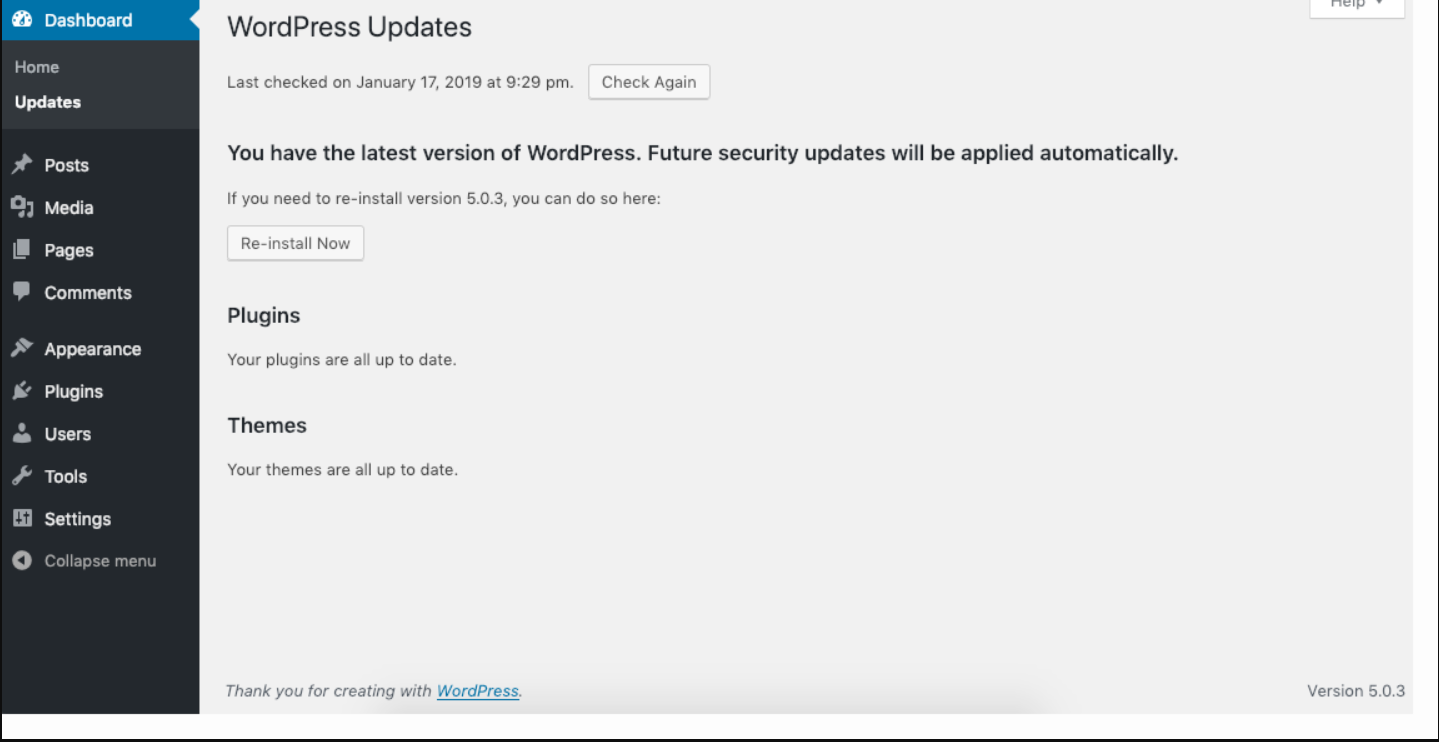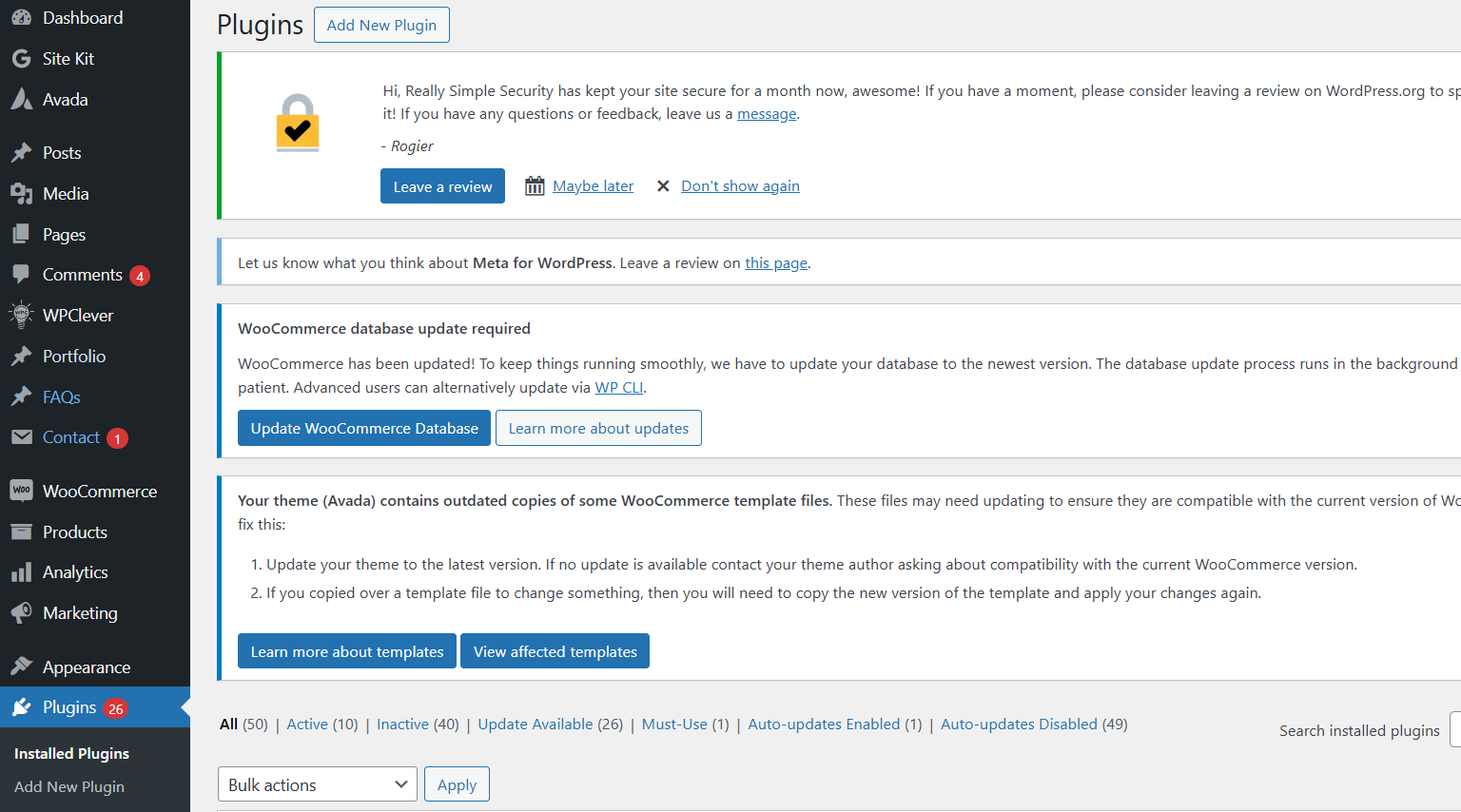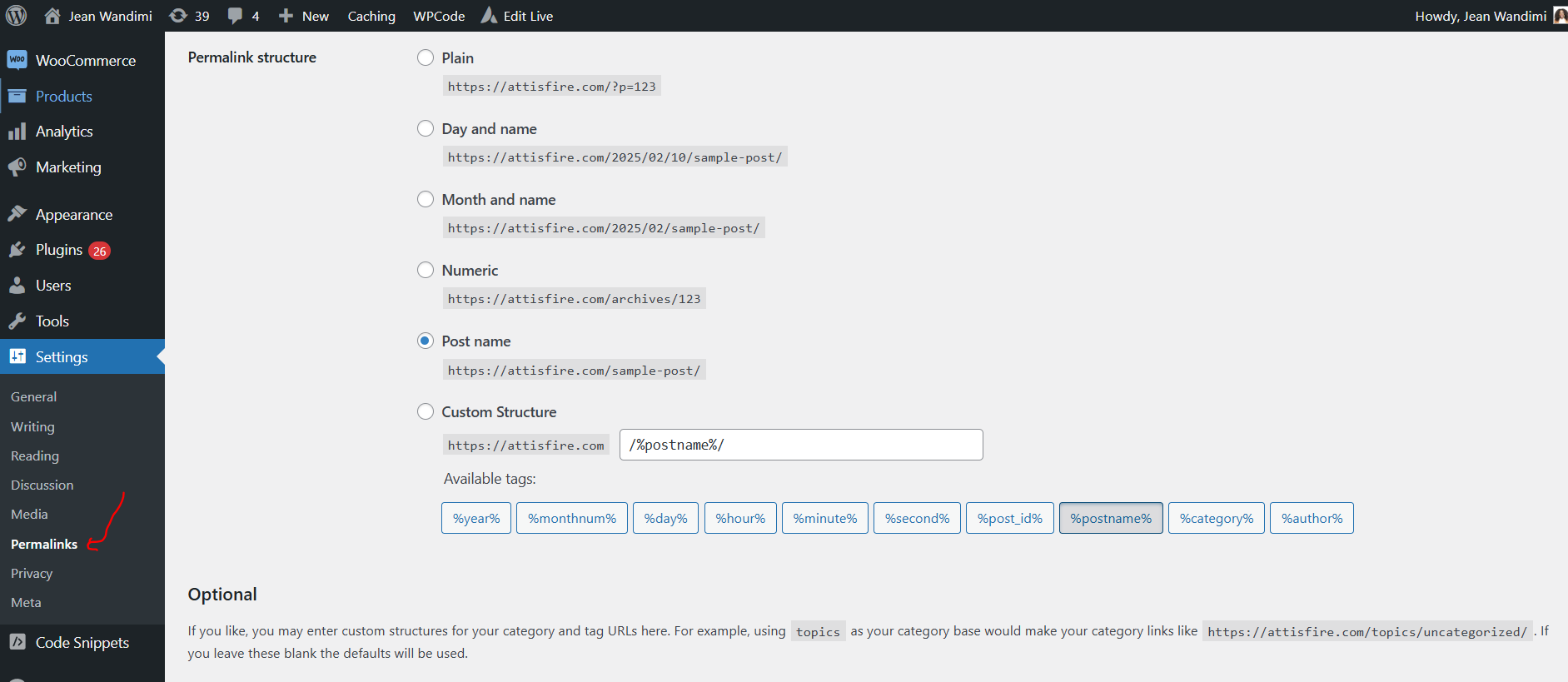I have 10+ years’experience using WordPress for my blogs and job and there are some mistakes that I have come across.
WordPress is a powerful and versatile platform, but even the most experienced users can fall into common pitfalls that affect your site’s performance, security, and user experience. Whether you’re new to WordPress or have been using it for years, being aware of these mistakes—and knowing how to fix them—can save you time, money, and headaches.
I explore some of the most common WordPress mistakes and provide actionable solutions to ensure your website runs smoothly and efficiently. We will also dive deeper into each topic to give you a comprehensive understanding of why these mistakes occur and how best to avoid them.
1. Neglecting regular updates
The mistake:
One of the most frequent mistakes is failing to update WordPress core, themes, and plugins. Skipping updates might seem harmless, but outdated software can lead to compatibility issues, bugs, and security vulnerabilities. Many users think that updating might break something on their site, but in reality, updates are critical for maintaining a healthy website.
How to fix it:
- Enable automatic updates: Whenever possible, enable automatic updates for minor WordPress releases, themes, and plugins. This minimizes the chance that you’ll miss a critical security patch.
- Schedule regular check-ups: Set aside time each week or month to manually check for updates and install them. A regular routine will help you catch any changes before they become problematic.
- Backup before updating: Use a backup plugin (like UpdraftPlus or BackupBuddy) to save your site’s data before making any changes. This ensures that you have a fallback option in case something goes wrong.
Additional insights:
Keeping your website updated not only protects you against security threats but also ensures that you benefit from new features and improvements. Developers continually refine their products, and updates often include performance optimizations that can enhance your site’s speed and responsiveness. It’s wise to subscribe to update notifications and read release notes to stay informed about what each update includes.

2. Installing too many plugins
The mistake:
While plugins extend the functionality of your website, installing too many—or using poorly coded ones—can slow down your site, cause conflicts, and open security loopholes. Overloading your site with plugins can create a maintenance nightmare and may lead to increased load times, which frustrate visitors.
How to fix it:
- Audit your plugins: Periodically review your installed plugins. Deactivate and delete any that you aren’t using.
- Opt for multi-function plugins: Look for plugins that serve multiple purposes rather than installing separate plugins for every feature.
- Research before installing: Check reviews, ratings, and support forums to ensure a plugin is reliable and regularly updated.
Additional insights:
Consider consolidating functionalities whenever possible. Sometimes, a single robust plugin can replace several smaller ones, reducing the overhead on your site. Additionally, periodically testing your site’s speed and performance can help you identify if a particular plugin is causing slowdowns. Use tools like GTmetrix or Pingdom to measure the impact of each plugin and decide if it’s truly necessary.

3. Poor security practices
The mistake:
Security is often overlooked until an issue arises. Weak passwords, unsecure login pages, and ignoring security plugins can leave your site vulnerable to hacks and malware. Relying solely on the default settings of WordPress might expose your website to unnecessary risks.
How to fix it:
- Use strong passwords and two-factor authentication (2FA): Implement robust passwords for all admin accounts and enable 2FA for an extra layer of security.
- Install a security plugin: Tools like Wordfence or Sucuri offer firewalls, malware scanning, and other security measures.
- Secure your login page: Consider using plugins like Login LockDown to limit login attempts and rename the default login URL to something unique.
Additional insights:
Regularly monitoring your site’s security can help you catch threats before they escalate. It’s also beneficial to educate yourself and your team on the latest cybersecurity best practices. Consider subscribing to security newsletters or blogs that focus on WordPress-specific threats, and always keep an eye on user permissions, especially if multiple people are managing your site.
4. Not backing up your website
The mistake:
Unexpected events—whether a hack, server failure or user error—can lead to data loss. Not having a recent backup can turn a minor issue into a major disaster. Many site owners mistakenly believe backups are too complicated or unnecessary until it’s too late.
How to fix it:
- Automate your backups: Use plugins like UpdraftPlus, BackupBuddy, or VaultPress to schedule regular backups.
- Store backups remotely: Ensure your backups are stored off-site (e.g., Dropbox, Google Drive, or Amazon S3) to protect against server issues.
- Test your backups: Regularly test your backup files to confirm that they can be restored.
Additional insights:
Develop a backup strategy that fits your site’s update frequency. Daily backups may be necessary for sites with high traffic or frequent content updates. Document your backup procedures so you or your team members can quickly restore the site in an emergency. Having a well-documented disaster recovery plan is invaluable.
5. Ignoring seo fundamentals
The mistake:
Many site owners underestimate the importance of Search Engine Optimization (SEO) or believe it’s too complex to implement. Poor SEO practices can hinder your site’s visibility and organic traffic. Often, mistakes like missing meta descriptions or improper use of header tags can affect your rankings.
How to fix it:
- Install an seo plugin: Yoast SEO or Rank Math can guide you through optimizing your content and improving your site’s metadata.
- Optimize content: Ensure your posts have proper headings, meta descriptions, and image alt tags.
- Create an xml sitemap: An XML sitemap helps search engines index your site more effectively.
Additional insights:
SEO is an ongoing process. Regularly updating your content, building backlinks, and keeping up with algorithm changes are key to maintaining strong search rankings. Utilize keyword research tools to target the right audience and analyze competitors to adjust your strategy over time.
6. Neglecting site speed optimization
The mistake:
Slow-loading websites frustrate users and negatively impact search rankings. Neglecting performance optimization can be detrimental to user experience and SEO. A sluggish website can lead to higher bounce rates and lower conversion rates.
How to fix it:
- Implement caching: Use caching plugins like WP Rocket or W3 Total Cache to reduce server load and speed up page load times.
- Optimize your images: Compress images before uploading or use plugins like Smush to optimize them automatically.
- Choose a reliable hosting provider: Your host plays a critical role in your site’s performance. Invest in a reputable provider that offers good performance and support.
Additional insights:
Consider using a Content Delivery Network (CDN) to distribute your content globally and reduce latency. Regularly monitor your site’s performance using tools like Google PageSpeed Insights. These measures improve load times and enhance the overall user experience.
7. Overlooking mobile responsiveness
The mistake:
With most users browsing on mobile devices, a site that isn’t mobile-friendly can drive visitors away. Overlooking responsive design is a common mistake that can hurt engagement and SEO. It’s crucial to ensure your website adapts seamlessly to various screen sizes.
How to fix it:
- Choose a responsive theme: Ensure your theme is designed to adapt to different screen sizes.
- Test your site: Regularly check it on various devices to see how it performs.
- Optimize for touch: Make sure that buttons and links are easily tappable on mobile devices.
Additional insights:
Invest in testing tools that simulate different devices and screen resolutions. This extra step can uncover hidden issues in your design, allowing you to make necessary adjustments before they affect user engagement. Mobile optimization also improves your site’s ranking in search engines, as they favour responsive designs.
8. Not using child themes for customizations
The mistake:
Editing your theme’s core files might seem like an efficient way to customize your site. However, these changes are lost when the theme is updated, leading to wasted time and potential site issues. This common pitfall can create more work in the long run.
How to fix it:
- Create a child theme: A child theme allows you to customise without altering the parent theme’s code. This ensures your modifications remain intact during updates.
- Use custom CSS plugins: For smaller changes, consider using a plugin that allows you to add custom CSS without touching the theme files.
Additional insights:
Child themes preserve your modifications and allow you to experiment with design changes safely. Familiarize yourself with basic CSS and PHP to take full advantage of child themes and document your changes for future reference.
9. Overcomplicating permalink structures
The mistake:
Default permalink settings might not be SEO-friendly or user-friendly. Poorly configured URLs can negatively impact your site’s search engine rankings and make navigating harder for visitors. Many users overlook this small detail until broken links begin to appear.
How to fix it:
- Choose a SEO-friendly structure: Go to Settings > Permalinks on your dashboard and select the “post name” option. This simple change makes your urls cleaner and more descriptive.
- Avoid frequent changes: Once your permalink structure is set and your site is live, avoid changing it frequently, as it can lead to broken links and lost traffic.
Additional insights:
A well-structured permalink not only improves SEO but also enhances user experience. When your URLs are simple and clear, visitors are more likely to trust your site and share your content on social media, further expanding your reach.

10. Failing to monitor and analyze site performance
The mistake:
Many WordPress site owners neglect to monitor their site’s performance and user behaviour. Without this data, you might miss out on insights that can help improve your site. A lack of performance monitoring can result in unnoticed issues that degrade user experience over time.
How to fix it:
- Use analytics tools: Integrate Google Analytics or a plugin like MonsterInsights to track visitor behaviour and site performance.
- Monitor uptime and speed: Tools like Pingdom or GTmetrix can help you keep an eye on your site’s load times and uptime, alerting you to issues before they escalate.
- Act on feedback: Use your collected data to make informed decisions about content, design, and functionality improvements.
Additional insights:
Regularly reviewing your analytics allows you to understand user behaviour patterns and identify trends. This data can be invaluable when planning future content or design updates. Engaging with your audience and soliciting feedback through surveys or comments can also provide qualitative insights to complement your quantitative data.
In conclusion
Avoiding common WordPress mistakes doesn’t mean your website will be perfect overnight. It’s an ongoing process of learning, tweaking, and optimizing. By addressing these frequent pitfalls—whether it’s keeping your software updated, choosing the right plugins, or implementing best SEO practices—you’ll create a more secure, efficient, and user-friendly website.
Remember, every website is unique, and what works for one may not work for another. Stay informed, listen to user feedback, and be proactive about improvements. With these fixes in place, you’ll be well on your way to mastering WordPress and ensuring your site thrives in a competitive online landscape.
Have you encountered any of these issues on your WordPress site? Share your experiences and solutions in the comments below. The more we share and learn from each other, the stronger our websites will become. Keep experimenting, keep learning, and let your journey toward a flawless website continue!




